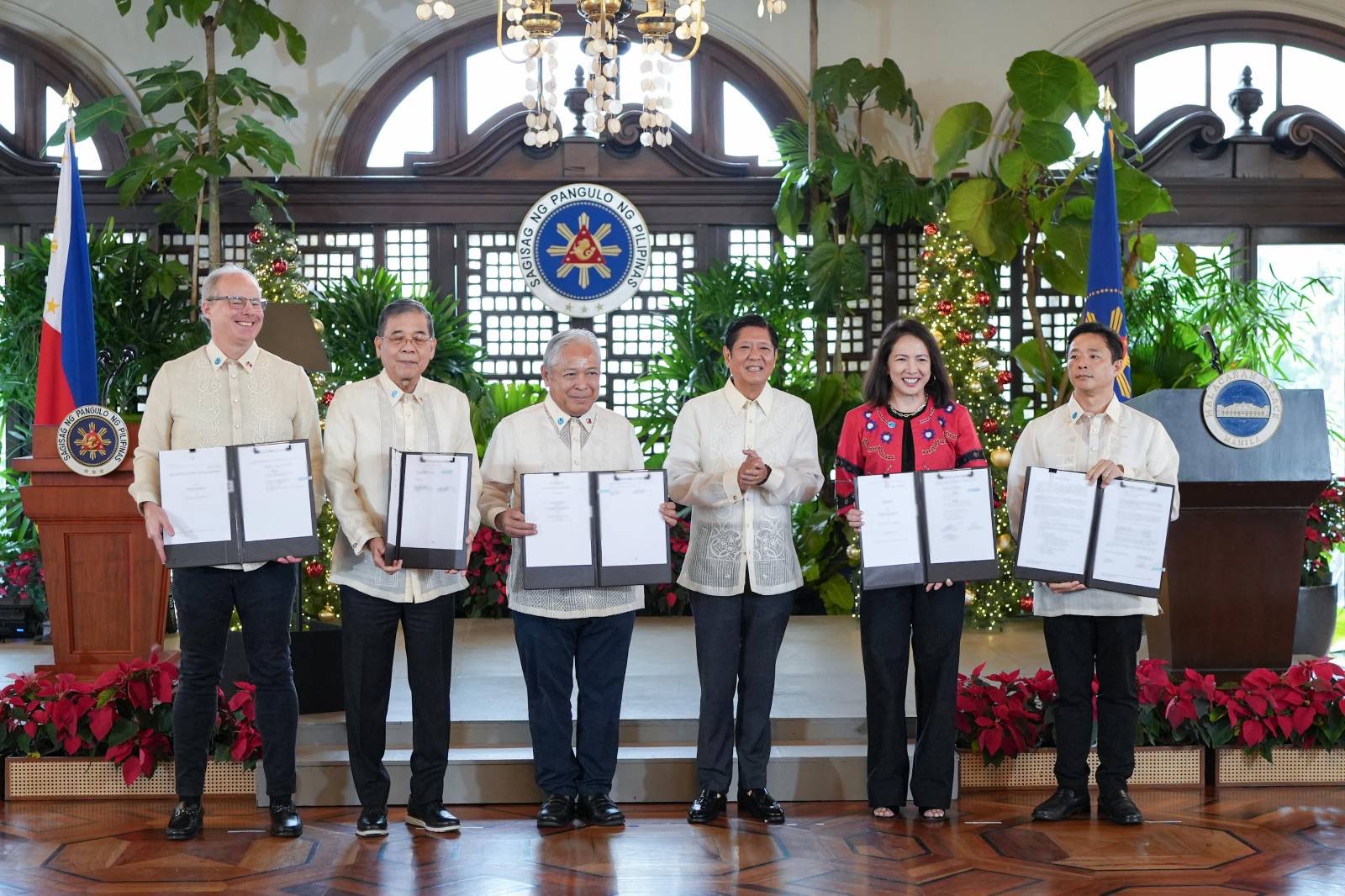
By Brian Campued
“Comfortable. Affordable. Safe. Sustainable. Accessible.” These are the five qualities that will describe the improved travel and commuting experience of Filipinos in Visayas and Mindanao as five key regional transportation projects were signed in Malacañang on Wednesday.
During the ceremonial signing of the projects, President Ferdinand R. Marcos Jr. underscored the transformative impact of these infrastructure projects—under his administration’s Build Better More campaign—in moving forward to an inclusive, modernized, and connected “Bagong Pilipinas”.
“I wish to share how we are going to make these things happen—how we can change things for the better and ensure that progress reaches every corner of our country,” the President said in a speech.
“Let us remember: These projects are not just structures, they are representative of every Filipino’s dream of more comfortable travel, better opportunities, and a clearer path towards their goals and dreams,” he added.
The signed contracts include the construction of the New Cebu International Container Port (NCICP), the “Expression of Interest” for the Cebu Bus Rapid Transit (BRT) Project, a Public-Private Partnership (PPP) for the modernization of Bohol-Panglao International Airport, and the agreements for New Dumaguete as well as New Siargao regional airports.
The Chief Executive said the P17-billion NCICP project funded by the Export-Import Bank of Korea (KEXIM) will help decongest the existing Cebu Base Port, while improving cargo handling capacity and reducing logistics cost.
“Once completed, this will not only make goods more affordable but will also generate thousands of jobs for our people. Apart from this, it will also create more opportunities for everyone as it will provide increased space for port activities,” he said.
Notably, the CICP will be the first-ever PPP project in the maritime sector as well as the first “hybrid” PPP under the Marcos Jr. Administration, according to Transportation Secretary Jaime Bautista.
Connecting major parts of Cebu City from Talisay to Talamban, the 35-kilometer Cebu BRT network will have 17 km of trunk service, 22 stations, 62 bus stops, four terminals, a depot, and 18 km of feeder services in the north and south of the trunk lines.
Funded by the World Bank and Agence Française de Développement (French Development Agency), the P28-billion project is expected to service some 164,000 passengers at full operational capacity.
The administration’s sustained partnership with the private sector is also highlighted following the signing of the P4.53-billion PPP to expand the Bohol-Panglao International Airport in two phases, increasing passenger capacity from 2 million to 2.5 million per year by 2026 and up to 3.9 million by 2030.
The 30-year concession agreement with Aboitiz InfraCapital involves the expansion of the passenger terminal building and other airport facilities, installation of required and modern aviation equipment, development of commercial assets and improvement of airport services.
“This means we can provide seamless travel to a lot of tourists—which translates to more jobs for Boholanos, especially in the hotel and restaurant industries,” Marcos said, noting a stream of annual revenue that will be generated by the end of the concession period.
“But more than just the revenue, its true success will be the number of lives that it will change for the better in Bohol. It is a promise to our beloved people that they will be the first to benefit from the continued arrival of tourists and of investors,” he added.
Expanding connectivity in Visayas and Mindanao, the development of new airports in Dumaguete and Siargao are seen to boost tourism and trade by easing the movement of farmers, tourists, and entrepreneurs among other benefits.
“These projects shall allow our farmers to efficiently bring produce to new markets, tourists to discover more of the charms of these islands, and entrepreneurs to expand their businesses,” the President said.
For his part, Transportation Secretary Jaime Bautista stressed the importance of PPPs in driving innovation and infrastructure development.
“The signing of the Transaction Advisory Services Agreement for more PPP projects manifest the Administration’s unwavering commitment in providing improved transport connectivity across the nation,” Bautista said.
Tourism Secretary Christina Frasco welcomed the signing of the transport infrastructure projects, highlighting the importance of airports and seaports as “vital gateways” that contribute to the overall experience of travelers in the country.
“By instituting world-class facilities on land, air, and sea, we elevate quality of life for our fellow Filipinos and increase the global competitiveness of the Philippines in terms of tourism and trade, assuring that these island destinations continue to shine as vibrant hubs of culture, commerce, and sustainable growth,” Frasco said.
“Consequently, it is imperative that we improve and modernize these critical points of entry. This undertaking will surely complement our ongoing efforts to enhance air routes and increase the number of available air seats, which ultimately drives more visitors to our beautiful destinations,” the Tourism chief added.
The government earlier this year turned over the management of the Ninoy Aquino International Airport (NAIA) to the New NAIA Infrastructure Corporation and also signed a concession agreement with Aboitiz InfraCapital for the Laguindingan International Airport in October. (with report from Rod Lagusad/PTV News)
-iro
